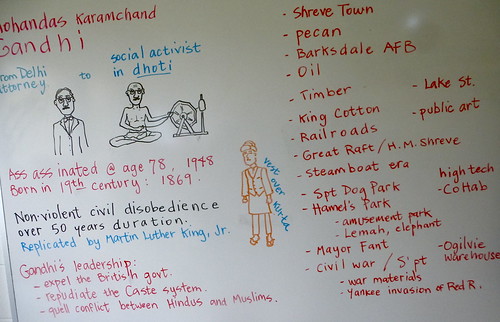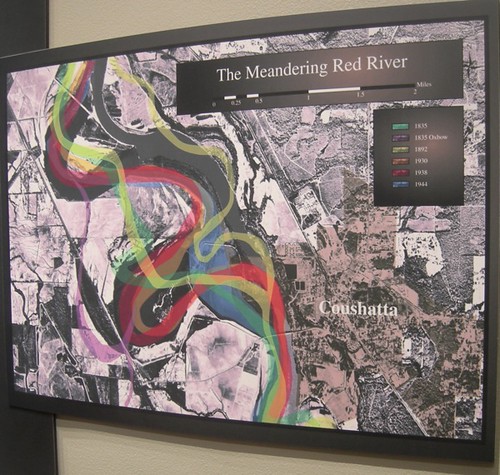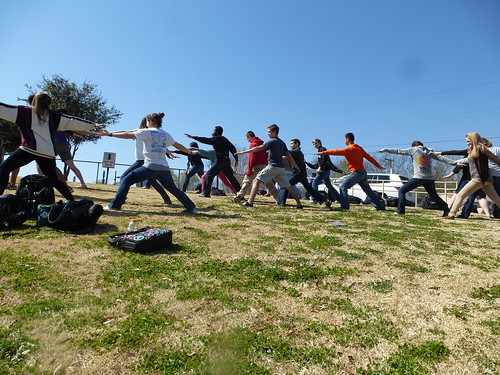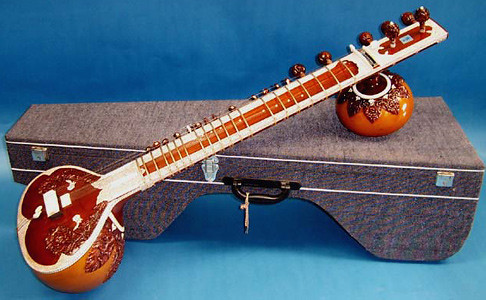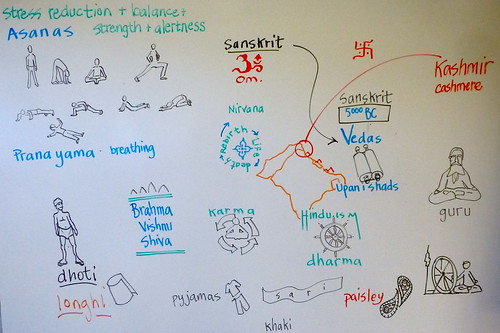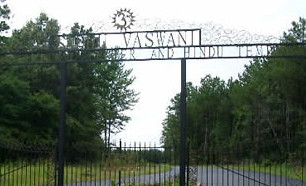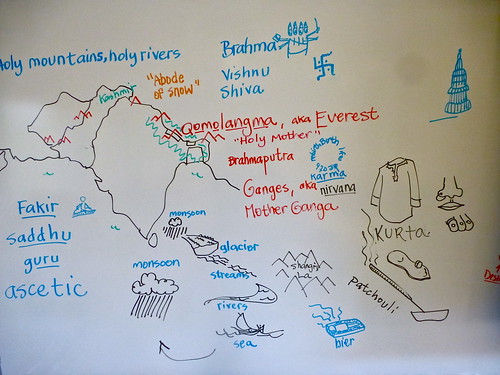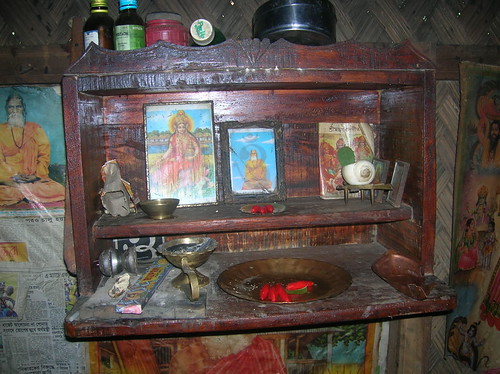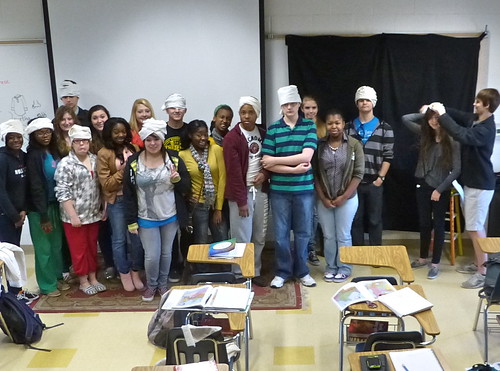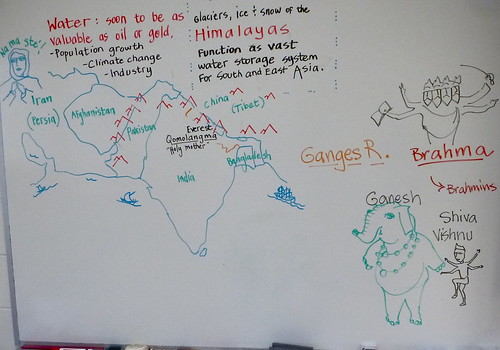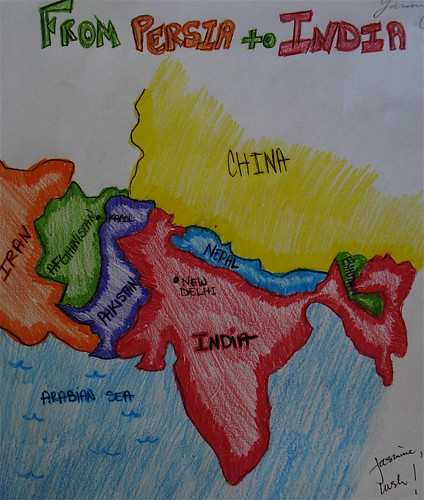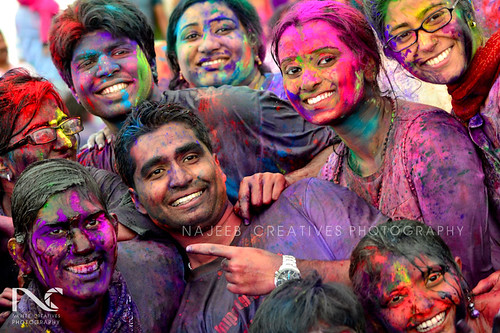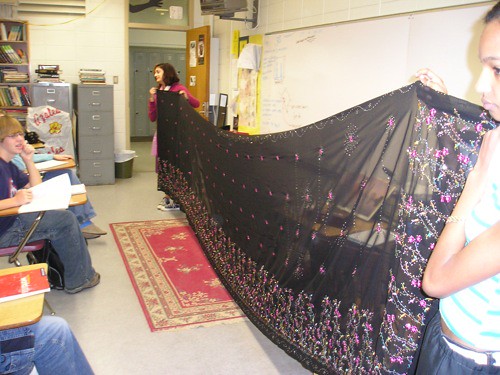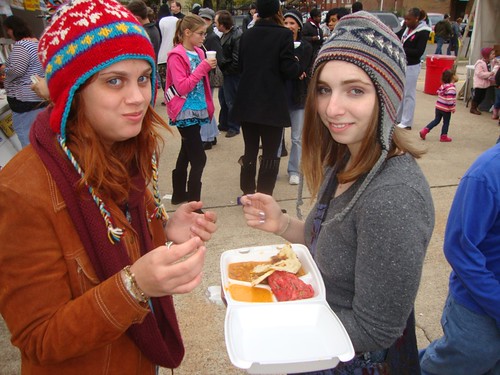Friday, March 22, 2013
Monday, March 18, 2013
Field trip on the history and future of the Red River area during classon Wed, Thurs
Each student will have to read a brief presentation on a Red River-related topic as we trek by school bus from Hamel's Park / Spt Dog Park site to the Red River bridge and downtown. For a field trip permission slip, simply sign-in on a sheet in your student's notebook w signature and cell number. We will leave and return during the class period therefore students will not miss a minute of any classes.
Goals
WG. 2.1: Describe and categorize elements of the natural environment as belonging to
one of Earth’s physical systems: atmosphere, lithosphere, biosphere, or hydrosphere.
WG. 2.4: Explain and give examples of natural and human processes that shape
Earth’s surface and identify specific locations where these processes occur.
WG.4.2 Analyze the distinguishing physical characteristics of a given place to
determine their impact on human activities.
WG.5.5 Explain how changes in technology have contributed to the spread of ideas
and information throughout the world.
WG.6.2 Identify challenges posed by the physical environment and evaluate
strategies that will allow humans to more effectively deal with these challenges.
The theme is the magical resource called water; in this case, the Red River. How does water affect the natural and built environments?
Principal sites:
- Stoner Boat Launch / Skate Park - recreation / parking / fishing
- Railroad bridges, site of late nineteenth century transportation technology revolution.
- SciPort parking lot, river side. Observation of bridge pivot and apparent displacement of the river channel. "Most of the riverfront is technically in Bossier Parish," says Cynthia Keith.
- Art installations; silver buoy, esp.
- Reflection on the steamboat days: mud banks, Commerce St, shanties.
- The Barnwell Center: city property being renovated.
- Red River bridge and narrow pedestrian walkway.
- Under-bridge Red River Entertainment District.
- Brief visit to high-tech office center, CoHab. 710 Commerce St
- Festival Plaza: successful muti-use center.
- Ogilvie Warehouse apartments conversion.
- Reflections on riverside sites
Choose a topic. Present 3 to 5 facts on it. Source.
- Great Raft
- Caddo tribe
- Shreve Town
- Texas Trail / Caddo Trail
- Henry Miller Shreve
- Cane and Bennett's Store
- Mary Bennett Cane
- Lake St / Silver Lake
- North Louisiana oil boom
- King Cotton
- Louisiana timber
- US Civil War and Shreveport
- pecan orchards
- Railroads - Kansas City Southern
- Barksdale AFB
- Mayor Clyde Fant
- Hamel's Memorial Park
- Lemah, the Hamel's Petting Zoo elephant
- site of Spt Dog Park
- public art
- CoHab, high tech center, 710 Commerce St
Mohandas K Gandhi: making India's independence an international concern
Among the achievements of Mohandas "Mahatma" Gandhi -
- non-violent civil disobedience strategies.
- civil rights for Muslim and Hindu Indians in South Africa; a 15-year campaign.
- organised peasants to protest excessive land-taxes in India.
- opposed to basing politics on religion, he reached out widely to all religious groups.
- campaigns to expand women's rights.
- religious and ethnic amity.
- ending untouchability.
- increasing economic self-reliance.
- independence from British domination.
- use of British court system.
- use of precepts of Christianity.
- use of free press in Europe and the US.
From mountain pose, tadasana, to crow pose, bakasana: a study of the stress-reducing discipline called Yoga
Yoga, from the Sanskrit word similar to the English word "yoke." To yoke the mind and the spirit.
Hindu devotion has 5 forms. US yogis usu teach Hatha Yoga.
pranayama - breathing control.
asana - positions.
dharma - concentration; right purpose.
chakras - the body's energy centers.
yogi - expert practicioner.
guru - teacher or master.
yoga diet - simple, fresh ingredients.
asanas to explore -
- mountain pose: tadasana
- child's pose: balasana
- downward-facing dog: Adho Mukha Svanasana
- Surya Namaskara: the Sun Salutation series of asanas
- Crow (or crane) pose, balancing on one's hands: bakasana
- corpse pose: savasana
Sunday, March 17, 2013
No electronics in your possession on Test Day, Tues, Mar 19; be in your testing room and ready
Magnet's careful approach to the ACT, PLAN and Explore tests on Tues, Mar 19, mandates . . .
- no cell phones in classrooms.
- arrive at school no later than 8:20 am so that tests - in designated testing rooms - may begin promptly at 8:33.
- only approved calculators; actually, calculators are Not mandatory.
- no novels or textbooks in testing rooms.
- pencils are supplied.
Please try to get a good night's sleep and a bit of breakfast!
Thursday, March 14, 2013
The tabla and sitar quiz
1. India is about 80% Hindu. There is a major minority, however, that claims some 13% of the population graph: a) Sikhs b) Muslims c) Tibetans d) Pakistanis.
2. Indigenous peoples of India: a) Dravidians b) Aryans c) Muslims d) Hindus.
3. Once an integral part of India, today this is a separate, neighboring nation dedicated to a Muslim population: a) Nepal b) Bhutan c) Bangladesh d) China.
4. Given the creative industries for which India and America are so famous, one would have to draw a close comparison between the cities of Los Angeles and
a) Kolkata b) New Delhi c) Porbandar d) Mumbai.
5. City noted as a software center: a) Bangalore b) Mumbai c) New Delhi
d) Madras.
6. The cuisine of India has absorbed influences from the regions in which you will find the cities of Mocha, Lisbon and Mexico City. T / F
7. Gold is the basic trade good that motivated Columbus to "discover" the Indians of the Caribbean. T / F
8. A direct neighbor of India: a) Sri Lanka b) Afghanistan c) Iran d) Oman.
9. The highest and most extensive mountain border separates India from
a) China b) Bangladesh c) Pakistan d) Afghanistan.
10. Highest number of human beings in the region: a) Delhi b) Bombay c) Calcutta d) Bangalore.
11. The sitar is a pair of small drums with metal bodies that can be tuned by tightening the leather straps that connect the drum head to the drum bottom. T / F
India: Hinduism, yoga and fabrics
These sketches are explained in coordinated notes on the blog. Some of it may, of course, need a bit more research.
And let's do more yoga in class!
Dharma, Karma and Samsara
Hindu Beliefs
These beliefs are rooted in ancient texts called The Vedas and The Upanishads.
Dharma
Dharma stands for the ultimate moral balance of all things. Dharma belongs to the universe and to the individual as well. So, just as there is a divine order of the natural and cosmic realms, there is the same order within a personal life. However, each one has the responsibility to balance his or her own dharma.
A Hindu's dharma is played out in all areas of life: religious, social, and familial. If a person makes a promise, the promise must be kept at all costs. Likewise, the faithful maintain their religious rituals while attending to their family's needs.
But what if an individual goes astray? This leads to the next major Hindu belief, karma.
Karma
"What goes around comes around" or, "You reap what you sow:" both of these sayings mirror the Hindu concept of karma.
Basically, karma stands for the belief that a person experiences the affects of his or her actionsthat every act or thought has consequences. Living in a balanced universe, if an individual disturbs this order, he or she will suffer commensurately. But an ethical and moral life, with undisturbed dharma, will lead to happiness.
How, then, can a Hindu hope to find redemption from wrongdoing? If the person does not lead a pure and stainless life, what hope is there for happiness? The answer lies in samsara.
Samsara
In the Western world, samsara is commonly known as reincarnation. Samsara represents the cycle of life, death, and rebirth in which a person carries his or her own karma. Each life cycle presents an opportunity for balance.
Therefore, an individual may experience effects from past lives, although the circumstances may be totally different. In fact, many Hindus believe that a person's worldly status depends upon actions in a past life. Likewise, good thoughts and actions can liberate a person. Some Hindus believe that certain people meet in more than one life in order to achieve karmic balance. Thus, every relationship and situation becomes meaningful.
What happens, then, when a person becomes purified? Is reincarnation an eternal process, or is there another realm? The answer lies in moksha.
Moksha
Like heaven for the Christian, Hindus strive to reach moksha, or a state of changeless bliss. Moksha is achieved by living a life of religious devotion and moral integrity without any interest in worldly things. However, it may be many lifetimes within the wheel of life before moksha is achieved. The ultimate reward is release from samsara and union with God.
Wednesday, March 13, 2013
Brahma, Vishnu and Shiva
Hinduism believes that there is only one supreme Absolute called "Brahman".
However, says Hindusim.about.com, it does not advocate the worship of any one particular deity.
The gods and goddesses of Hinduism amount to thousands or even millions, all representing the many aspects of Brahman. Therefore, this faith is characterized by the multiplicity of deities.
The most fundamental of Hindu deities is the Trinity of Brahma, Vishnu and Shiva - creator, preserver and destroyer respectively. Hindus also worship spirits, trees, animals and even planets.
India: fine fabrics and style for 7,000 years
India's recorded history of clothing goes back to the 5th millennium BC in the Indus Valley Civilisation where cotton was spun, woven and dyed, says Wikipedia.
Bone needles and wooden spindles have been unearthed in excavations at the site.
The cotton industry in ancient India was well developed, and several of the methods survive until today. Herodotus, an ancient Greek historian described Indian cotton as "a wool exceeding in beauty and goodness that of sheep".[2]
Indian cotton clothing was well adapted to the dry, hot summers of the subcontinent. Most of the present knowledge of ancient Indian clothing comes from rock sculptures and paintings in cave monuments such as Ellora. These images show dancers and goddesses wearing what appears to be a dhoti wrap, a predecessor to the modern sari.The upper castes dressed themselves in fine muslin and wore gold ornaments[3]
The Indus civilisation also knew the process of silk production. Recent analysis of Harappan silk fibres in beads have shown that silk was made by the process of reeling, a process known only to China until the early centuries AD.
The Himalayan ("abode of the snows") water cycle
While politicians argue over whether the earth's warming cycle is a product of recurrent cycles or is being hastened by population and man's activities, the bottom line is that climate change is taking place.
Because the glaciers of Qomolangma are the source of water for 40% of the population, the dissolution of Himalayan glaciers is of global concern.
Reincarnation and karma: Hinduism
Hinduism is the predominant religion[1] of the Indian subcontinent, says Wikipedia.
Hindu beliefs vary widely, with concepts of God and/or gods ranging from Panentheism, pantheism, monotheism, polytheism, and atheism with Vishnu and Shiva being the most popular deities.
Other notable characteristics include a belief in reincarnation and karma, as well as personal duty, or dharma.
Among its roots is the historical Vedic religion of Iron Age India, and as such Hinduism is often stated to be the "oldest religious tradition" or "oldest living major tradition."[3][4][5][6] I
t is formed of diverse traditions and types and has no single founder.[7] Hinduism is the world's third largest religion after Christianity and Islam, with approximately a billion adherents, of whom about 905 million live in India.[8] Other countries with large Hindu populations can be found across southern Asia.
Studying India: lessons in turban tying
A turban is a kind of headwear based on cloth winding; there are many variations, says Wikipedia.
Turbans are customary in many communities in India, the Philippines, Afghanistan, the Middle East, in some areas of North Africa, in eastern Africa (especially in Kenya), South Asia, and some parts of Jamaica.
For Sikhs, originally from Punjab in India, wearing the turban, which they refer to as Dastar, is an important religious observance.
In India the pagri is a symbol of honour and respect everywhere it is worn; it is a common practice to honour important guests by offering them one to wear.
Colours are often chosen to suit the occasion or circumstance: for example saffron, associated with valour, is worn during rallies; white, associated with peace, is worn by elders; and pink, associated with spring, is worn during that season or for marriage ceremonies.
The men of many Islamic cultures wear a turban-style headdress, often in emulation of the Prophet Muhammad, who is believed to have worn a black or white turban.
Holy mountains, holy rivers: Qomolangma, the Himalayas, the Ganges and Brahmaputra
Mt Blanc in the European Alps, Mt Whitney in the Sierra Nevadas, Mt Fuji in Japan, Mt Kilimnajaoro in Tanzania:
all are holy mountains, revered in ancient practice.
Just as is Mt Everest, or Qomoloangma, "Mother Mountain," a holy site to the peoples of Central Asia.
Hindu people of India see the rivers as holy places. They chant prayers as they bathe in the Brahmaputra and Ganges, the best-known holy rivers. They sip the water though it is full of dangerous bacteria. They bury the dead in the holy rivers, especially the Ganges.
Alas, I have not found evidence for the spiritual status of the Red River in the minds of the Caddo. But the Red gave them protein, transportation, bathing and ritual places. What site could be more important in their lives?
Tuesday, March 12, 2013
Pranayama. Asana. Masala.
1. Describe the peninsula described as the "pointed tooth."
2. What is the direction of this sub continent's continental drift?
3.What adhumitrious (organically explosive) rocky upheaval has been screwed upward by the continental collision?
4. What is the Indus and its function?
5. The Brahmaputra and the Ganges lie on opposite sides of the Himalayas and yet they flow together. How so?
6. The Great Indian Desert is called the __ Desert.
7. When does monsoon occur? Not, "Soon!"
8. Who are the sherpas and what do they do?
9. The Ganges delta is a powerful center for ag. What nation does it affect?
10. There is a name for a type of farming in which you barely stay ahead of starvation. It is called __ farming.
11. Tossing pigmented power upon each other: the __ Festival.
12. There are 3 ways in which Bangladesh is distinct. Name them.
13. The Taj Mahal is decorated with verses from the __ .
14. What is that entity known simply as K2?
15. Name 5 nations associated with the craggy ranges to the East and Wes of India.
16. Please define
a) Pranayama
b) Asana and
c) Masala.
Holi Holi Day!
Holi (Hindi: होली, Nepali: होली) is a religious spring festival celebrated by Hindus as a festival of colours. It is primarily observed in India and Nepal.
It is also spreading across the US. In Shreveport there will be a fest like Holi called Color Run on St Patrick's Day.
Thursday, March 07, 2013
India: turban and sari
India quiz 2
1. India's neighbor along the Arabian Sea: __ .
2. India's neighbor on the Bay of Bengal: __ .
3. Name the 2 nations partitioned from India to form Islamic nations some 65 years ago. __ and __ .
4. The capital city: __ .
5. Bollywood is in the city of __ .
6. The great city near the coast of the Bay of Bengal: __ .
7. What is the modern name for Calcutta?
8. The modern name for Bombay?
9. Mt Everest and the Himalayan range border India, China and __ .
10. Karachi is on the Arabian Sea coast in the nation of __ .
11. The large nation that borders Pakistan on the west: __ .
12. India's approximate population: a) half a billion b) one billion c) one and a half billion.
13. Turmeric, cardamom, mace, ginger and other species make up this famous masala: __ .
Tuesday, March 05, 2013
Taj Mahal quiz
1. The Taj Mahal was built about the year _____ .
2. It was built by the Mughal emperor of Northern India, a man who was called Lord, or ___ , Jahan.
3. Jahan was a Muslim ruler of a nation whose people are mostly adherents of the __ religion.
4. The Taj is in the city of Agra, adjacent to a) the Bay of Bengal b) Ganges River c) Thar Lake d) Yamuna River.
5. It was built of white __ (stone).
6. It was dedicated to Mumtaz Mahal, Jahan's principal __.
7. A building that is a tomb is called a __.
8. Most of the designers of the Taj were from the nation of __ .
9. There are three items of the Taj Mahal complex that identify the Shah's culture as Islamic: one is a building to the west of the Taj; the side building is a ___.
10. The four slender towers called __ are the site of the daily call to prayer.
11. The decorative designs on the walls are composed of Arabic calligraphy and vine-like and geometric designs called __.
12. Aside from the decorated caskets of the emperor and his wife, the interior of the Taj Mahal is empty. T / F
13. In the final chapter of Jahan's life he was imprisoned by Aurangzeb, his ___.
Indie work: eating at Indigo or India's Restaurant
In the box above are succulent tastes of India including Tandoori Chicken and naan bread.
They are from India's Restaurant, 3030 Youree Dr, not far from Magnet. It is not a terribly handsome restaurant, but the food wins raves from online reviewers.
Write a first-person story of what you ate, what you smelled and learned - from the menu as well as by talking to the manager or owner - as you had supper or lunch (cheaper, more food).
Indigo Indian Bistro, 8660 Fern Ave, is also a recommendable place. Its decor is definitely more uptown than that of India's.
Recommended dish: Chicken Tikka Masala.
Other topics for indie work that do not require eating out -
Brief comparison essay; choose one topic .
* Mecca and Jerusalem
* Great Mosque of Mecca and Dome of the Rock
* Use class notes.
All indie work must be typed. No more than one page, three-quarters of a page is sufficient to win 10 pts. Remember: detail, examples, tastes, smells, quotes, names.
Monday, March 04, 2013
One-page Taj Mahal project due Th/Fri, 12 pts
For this exercise in tactile, visual and kinesthetic learning, please compete the following -
- All material on one sheet in notebook.
- Cut out image of Taj. Building topped by an onion-shaped dome flanked by smaller, simple domes.
- Glue to notebook page.
- Use pen to draw outline of window and door frames.
- Use pen to add filigree - calligraphy and arabesques - on walls.
- Add the narrow pools that bisect the gardens. Dark green color.
- Add green lawns indicating gardens.
- Add notes, such as Built in 1600's.
- Shah Jahan was a notable Muslim emperor and patron of the arts. He imported craftsmen and artists from Persia and other regions. Many of the finest forts, gardens, palaces and mosques in Delhi were built by Shah Jahan.
- Mumtaz Mahal was his wife, confidante and constant companion. Her name means "Jewel of the palace."
- The Taj Mahal is a mausoleum solely dedicated to his wife and her tomb.
- The design is based on Persian and Muslim architecture.
- The minarets remind the viewer that the Islamic call to prayer, 5 times a day, is chanted by muezzins in the towers.
- Arabic script is well suited to calligraphic presentation.
- Vine-like and geometric designs called Arabesques also decorate the walls.
- There is a mosque on one side and a matching guest house on the other side of the Taj.
- Symmetry was a guiding principle.
- Map of India: include Delhi and Agra.
- Snappy title.
- A massive Gate House provides a formal entrance to the gardens and the Taj.
- Anomaly: the Taj is an anomaly in that it is the most famous building in India but does not reflect Hindu design or faith. Actually, the Muslim population of India was once larger than today's approximately 14%.
- Aurangzeb: as an aging emperor, Shah Jahan was imprisoned by his son Aurangzeb, who succeeded him and reportedly disapproved of his father's profligacy. Discarding the relative tolerance of his forebears, Aurangzeb brought a Taliban-style rule, trying to impose a literal Islam and persecuting and penalizing Hindus and others.

